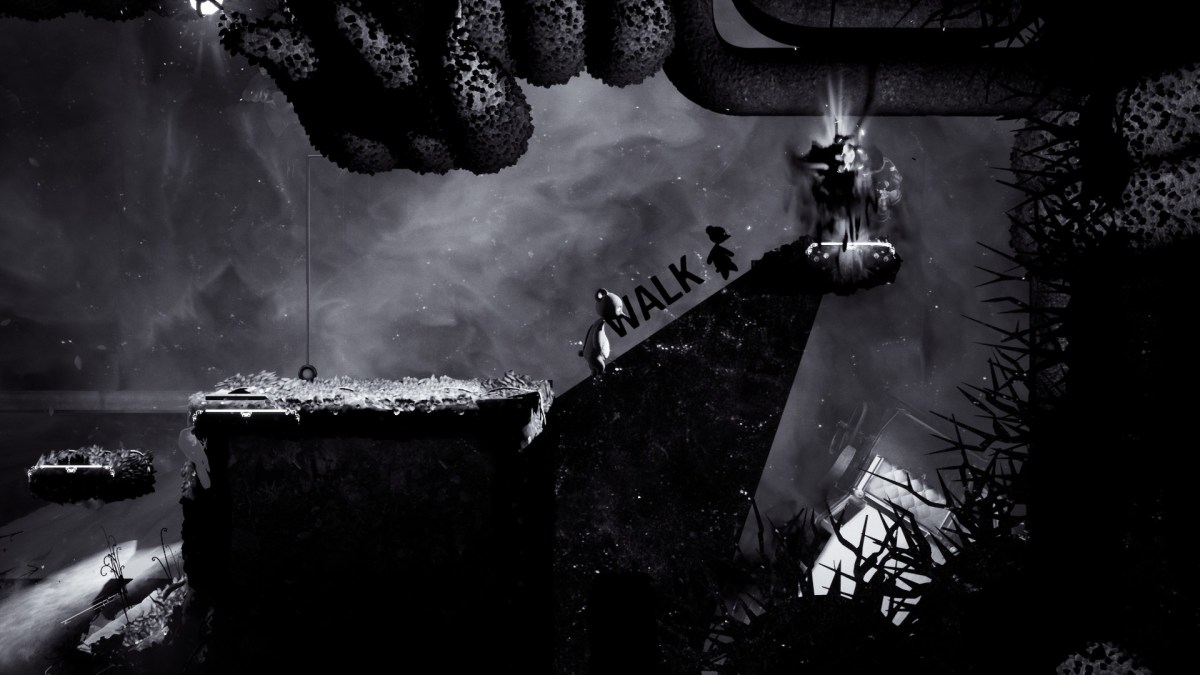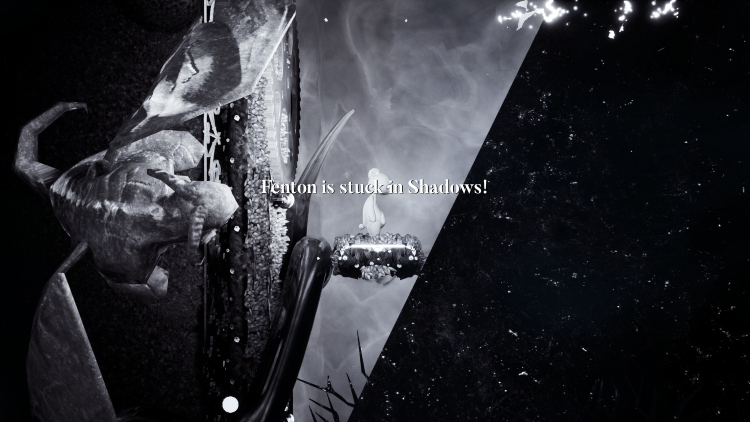There are some movies out there that I consider to be “half-horrors.” Films that aren’t necessarily shocking, but are completely capable of giving you the creeps all the same. Creepy button-up doll eyes or the uncanny valley claymation set on Halloween are some of the things that come to mind. Tandem: A Tale of Two Shadows fits there perfectly, with the game’s terrifically gothic setting, a creepy doll with a hunchback, and a protagonist with an incredibly uncanny look. While the setting of the world is undeniably gripping, this short four-hour puzzle game never completely cashes in on its promising gothic vibe. Perhaps this is because the narrative is a little shallow, save for a bombastic twist ending, or that the characters of the game never actually make any sense.
But at its heart, Tandem: A Tale of Two Shadows isn’t a story-based game, no matter how much nonsensical lore the game wants to contain. Tandem is a puzzle game that strives to act as a unique wedge in the genre, to provide a different perspective into puzzle design that is so popular in gaming. In that sense, does Tandem successfully meet its goals? The truth is, yes, in a sense. The presentation of the world’s gothic paradise is represented quite well through puzzles. But, as clever as the design can be at times, the puzzles are never that taxing.
A case of multiple perspectives
The puzzles in Tandem: A Tale of Two Shadows are undertaken from two perspectives. You play as Emma from a top-down perspective as she wanders through creepy forests or abandoned buildings. But, she’s not able to progress through the Tim Burton-esque world of Tandem alone, fitted with locked gates, evil mechanical spiders, and suspiciously placed buttons. That’s where Fenton comes in, an animated teddy bear who can manipulate the shadows and reach areas Emma cannot. Playing as Fenton also adds a platformer element to the game, as the side-scroller perspective comes complete with some obstacles to leap over.
The presentation of this perspective-swapping mechanic is well done and seamless for the most part, but there are instances where the game may bug out or act too sensitive. It feels easy to switch between Emma and Fenton, only requiring the press of a button, but the game’s lack of clarity can frustrate at times. Emma needs to manipulate the light to provide Fenton with ground to stand on. As Fenton is surrounded by shadows, he can stand on those shadows to progress. But, if he’s standing in the middle of a shadow, he freezes and is unable to move. There’s a slight lack of polish here, as there are times where it seems like Fenton is just being a big baby. He has a tiny foot in the shadow, and he can’t move? I experienced a moment where it didn’t even seem like Fenton was trapped at all.
There are other aspects of the game that make the puzzles feel more tedious. Stealth mechanics are snuck into Tandem, as Emma must traverse her way around a variety of enemies. One world features killer mechanical spiders, while another features some sort of squid that lives in pipes filled with oil. There are times when Emma needs to sneak past these enemies, and these are by far the worst aspects of Tandem‘s puzzles. The game is interesting when it utilizes its double perspective, not when you play as Emma and have to find a way past a spider. You can cheese these sections quite easily, as well, and I’m pretty sure I made it past a variety of stealth sections in ways not intended.
A part of me wishes the puzzles had a bit more complexity to them. The puzzles never feel too simple, but the game doesn’t challenge you as much as it could. The difficulty of the game isn’t necessarily a problem, but there isn’t a particular portion of the game that really gets you thinking too hard. Whether or not that’s a good or bad thing depends entirely on your preference.
The grim world of Tandem
At least the presentation of Tandem’s world is well-executed, and the ability to mix in the lighting within the game’s puzzles is quite clever. As stated, these are easily the most interesting parts of the game. When you have to manipulate the light, using carts or mirrors, is when the game shines, as you have to correctly set up its double perspective. This aspect of the game can easily break into monotony, but the game isn’t that long anyway, so it never overstays its welcome.
And while I honestly hate the look of Emma, whose uncanny appearance veers into looking almost cheap, the other aspects of Tandem‘s dark universe are mostly well done. Defunct Merry-go-rounds are lined up against the walls, alongside gardens and dingy brick buildings. It’s an environment befitting of Tim Burton design, with tons of cool set pieces. The game’s narrative is far less engaging, and while it does take an interesting turn, it’s a boring and monotonous mess for the majority of the game.
Overall, Tandem: A Tale of Two Shadows is a solid puzzle title based on a well-executed premise. The game never overstays its welcome, with about four hours of playtime. The bottom line here is it’s a cheap game with well-executed ideas. But is Tandem the game that adds a truly unique perspective to the puzzle game genre, like It Takes Two for example? Unfortunately, my answer would be no. Tandem is a solid game, but it isn’t a puzzle revolution. It is what it is: a simple, solid, affordable good time.











Published: Oct 22, 2021 11:33 am